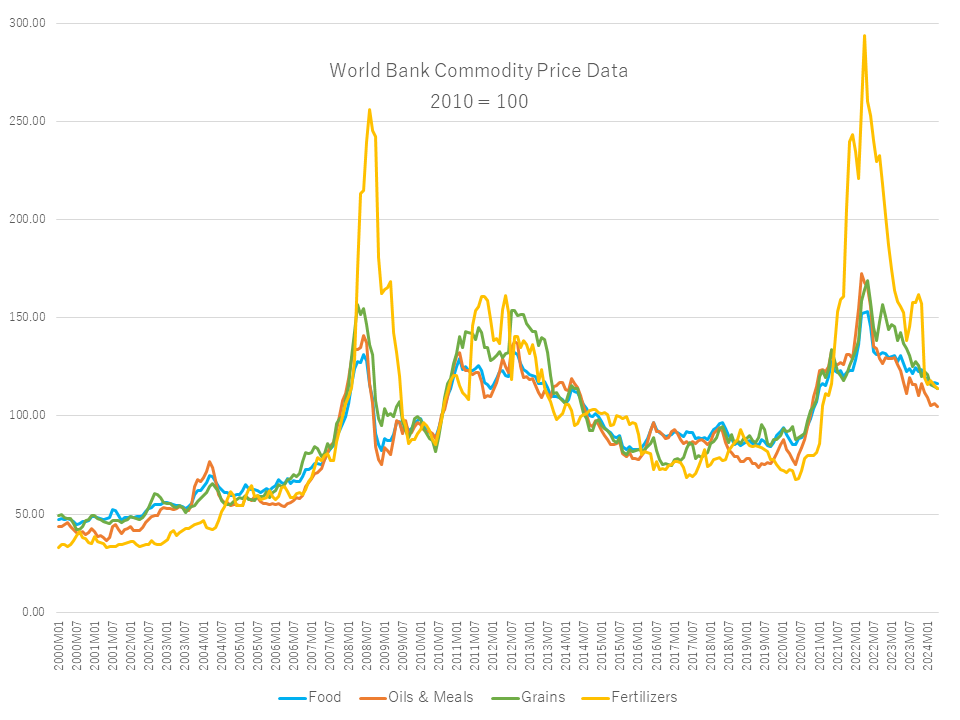Pick Up
1027. Recent Lower Food Prices amid Improved Supplies

1027. Recent Lower Food Prices amid Improved Supplies
In a blog post on May 24, World Bank economists noted that the recent decline in food prices is due to an improved outlook for global food supply.
The World Bank's food price index fell by 4% in the first quarter of 2024. Wheat and maize prices hit three-year lows in the first four months of 2024 as major exporters increased production and the prospect of the next harvest. Rice prices, which had been soaring from the fourth quarter of 2023 to the beginning of 2024, have also calmed down, reflecting factors such as the depreciation of major exporting currencies against the U.S. dollar, weak demand due to high prices, and seasonal increases in supply. Similarly, the edible oil and feed price index fell by 5% in the first quarter of 2024 following record soy production in Brazil, nearly double production in Argentina, and weak demand in China.
Grain supply has reached record levels for the second year in a row, and oil crop production has reached record levels for the third year in a row. In line with trends over the past four years, commodity crop inventories are expected to decline marginally, with the current inventory rate at 26.9%, which is lower than the 30.2% recorded in 2019 but higher than the all-time low of 17.3% recorded in 2007.
Reflecting these outlooks, the World Bank's food index is expected to decline by 6% in 2024 and 4% in 2025. On the other hand, the blog referred to several risk factors, including weather (especially the impact of the upcoming La Niña), geopolitical conflicts (affecting energy and fertilizer prices), and disruptions at maritime checkpoints (increasing transportation costs).
Contributor: IIYAMA Miyuki, Information Program
